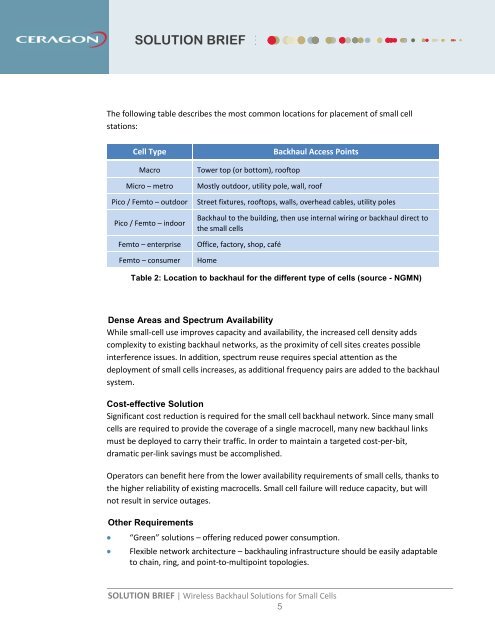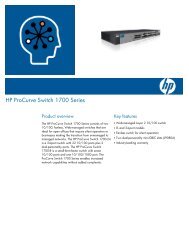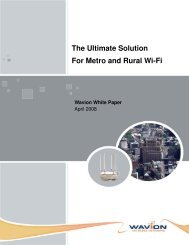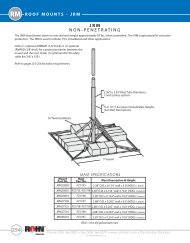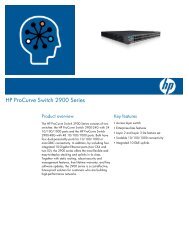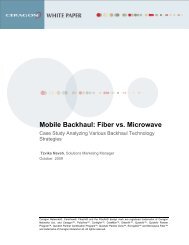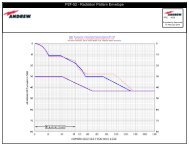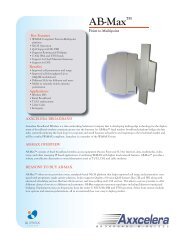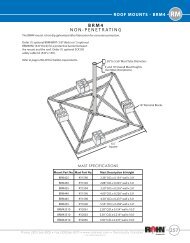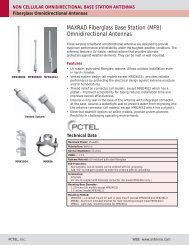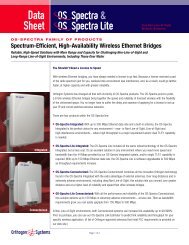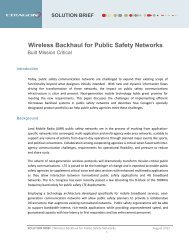Wireless Backhaul Solutions for Small Cells - Ceragon Networks Ltd.
Wireless Backhaul Solutions for Small Cells - Ceragon Networks Ltd.
Wireless Backhaul Solutions for Small Cells - Ceragon Networks Ltd.
You also want an ePaper? Increase the reach of your titles
YUMPU automatically turns print PDFs into web optimized ePapers that Google loves.
SOLUTION BRIEFThe following table describes the most common locations <strong>for</strong> placement of small cellstations:Cell TypeMacroMicro – metroPico / Femto – outdoorPico / Femto – indoorFemto – enterpriseFemto – consumerTower top (or bottom), rooftop<strong>Backhaul</strong> Access PointsMostly outdoor, utility pole, wall, roofStreet fixtures, rooftops, walls, overhead cables, utility poles<strong>Backhaul</strong> to the building, then use internal wiring or backhaul direct tothe small cellsOffice, factory, shop, caféHomeTable 2: Location to backhaul <strong>for</strong> the different type of cells (source - NGMN)Dense Areas and Spectrum AvailabilityWhile small-cell use improves capacity and availability, the increased cell density addscomplexity to existing backhaul networks, as the proximity of cell sites creates possibleinterference issues. In addition, spectrum reuse requires special attention as thedeployment of small cells increases, as additional frequency pairs are added to the backhaulsystem.Cost-effective SolutionSignificant cost reduction is required <strong>for</strong> the small cell backhaul network. Since many smallcells are required to provide the coverage of a single macrocell, many new backhaul linksmust be deployed to carry their traffic. In order to maintain a targeted cost-per-bit,dramatic per-link savings must be accomplished.Operators can benefit here from the lower availability requirements of small cells, thanks tothe higher reliability of existing macrocells. <strong>Small</strong> cell failure will reduce capacity, but willnot result in service outages.Other Requirements“Green” solutions – offering reduced power consumption.Flexible network architecture – backhauling infrastructure should be easily adaptableto chain, ring, and point-to-multipoint topologies.SOLUTION BRIEF | <strong>Wireless</strong> <strong>Backhaul</strong> <strong>Solutions</strong> <strong>for</strong> <strong>Small</strong> <strong>Cells</strong>5


